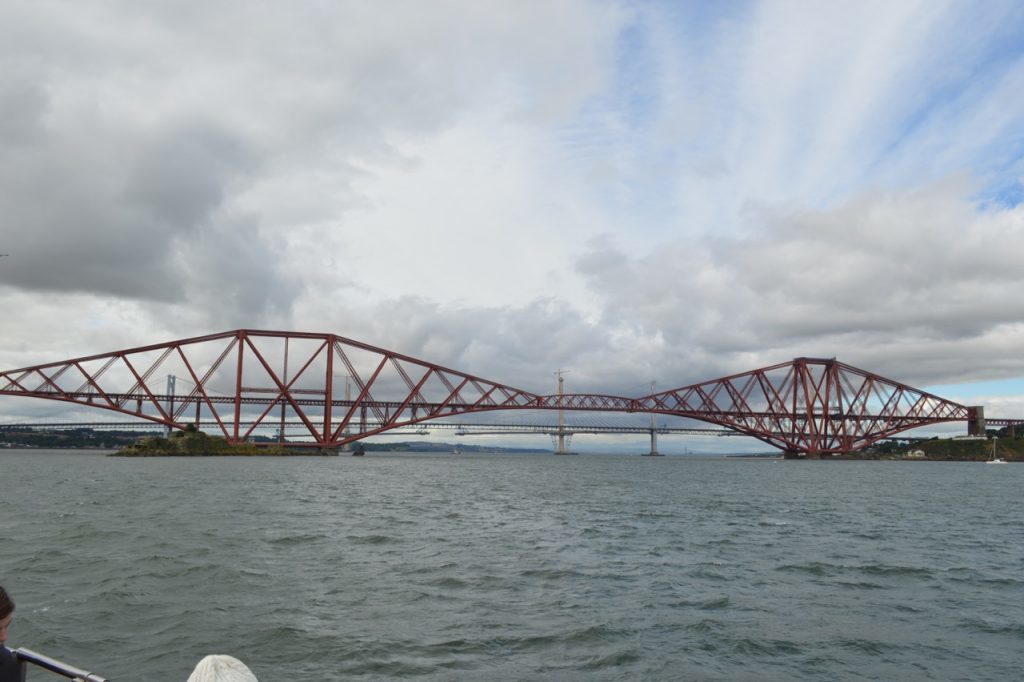The summer holidays may be over but hopefully there’s still plenty of summery weather to come to help us make the most of weekend outings. A boat trip to Inchcolm Island, the most beautiful island in the Firth of Forth, ticks all the boxes for a great family day out.
So how do you get there? The Maid of the Forth leaves the Hawes Pier at South Queensferry several times a day until the end of October and the journey to the island takes about 45 minutes. You then have 90 minutes to explore its 22 acres.
Known as the Iona of the East, Inchcolm is named after St Columba, the Abbot of Iona on the west of Scotland, and has its roots in the 6th Century.
Fragments of carved stonework from the Dark Ages testify to an early Christian presence on the island.
Inchcolm was supposedly visited by St Columba or St Colm (an Irish missionary monk and the 6th Century Abbot of Iona) in 567, and was named after him in the 12th Century.
King Alexander I was storm-bound on the island for three days in 1123 and in recognition of the shelter given to him by the hermits, promised to establish a monastic settlement in honour of St Columba.
Though the king died before the promise could be fulfilled, his brother David I later founded a priory here for Augustinian monks, becoming an abbey in 1223.
Inchcolm Island is separated from the Fife mainland by a stretch of water known as Mortimer’s Deep.
It was repeatedly attacked by English raiders during the Wars of Scottish Independence.
The island gets a mention in Shakespeare’s Macbeth : “That now Sweno, the Norwayes King, Craves composition: Nor would we deigne him buriall of his men, Till he disbursed, at Saint Colmes ynch, Ten thousand Dollars, to our generall use.”
You can explore Inchcolm Abbey, an Augustinian monastery dating back to the 12th Century, and the best preserved group of monastic buildings in Scotland.
The island also has some interesting, if slightly eerie, wartime fortifications as the island was home to around 500 soldiers during both world wars and formed part of Fortress Forth where all the islands in the Forth were garrisoned to protect the Royal Navy’s base at Rosyth and the rail bridge from attack from the sea. In 1916 an ammunition tunnel was dug through the eastern end of the island by the Royal Engineers which is still open to explore today.
Today the only threat of attack comes from the plethora of seagulls and fulmars and, during nesting season (April to July), it’s probably best to avoid the higher paths.
Although dogs must be kept on a lead you can let them off on Inchcolm’s two pretty beaches. There’s no cafe but there are plenty of picnic tables and there’s also a souvenir shop and small museum.
On the journey back you may see porpoises leaping, or common seals having a snooze on a catamaran buoy. Before heading back to base, The Maid of the Forth will take you under the new road bridge – a good chance to snap all three bridges in alignment.
www.maidoftheforth.co.uk
Giveaway
We have a family ticket to be give away (two adults and three children aged 5-15, worth £49.60) for the Inchcolm landing trip. To enter email your name, address and postcode and phone number to clindsay@thecourier.co.uk The winner will be chosen after August 29. Winner must book the date of sailing in advance and trip must be taken before October 30 2016. Non-transferable and no cash alternative. www.maidoftheforth.co.uk
Did you know?
Fragments of carved stonework from the Dark Ages testify to an early Christian presence on the island.
Inchcolm was supposedly visited by St Columba or St Colm (an Irish missionary monk and the 6th Century Abbot of Iona) in 567, and was named after him in the 12th Century.
King Alexander I was storm-bound on the island for three days in 1123 and in recognition of the shelter given to him by the hermits, promised to establish a monastic settlement in honour of St Columba.
Though the king died before the promise could be fulfilled, his brother David I later founded a priory here for Augustinian monks, becoming an abbey in 1223.
Inchcolm Island is separated from the Fife mainland by a stretch of water known as Mortimer’s Deep.
It was repeatedly attacked by English raiders during the Wars of Scottish Independence.
The island gets a mention in Shakespeare’s Macbeth : “That now Sweno, the Norwayes King, Craves composition: Nor would we deigne him buriall of his men, Till he disbursed, at Saint Colmes ynch, Ten thousand Dollars, to our generall use.”

















